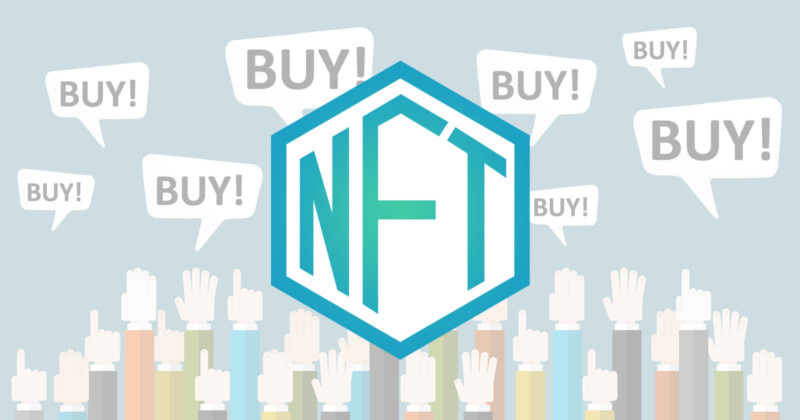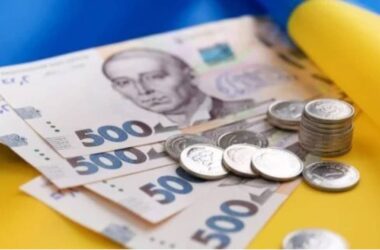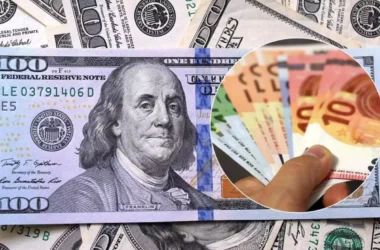The world is experiencing a digital art boom made possible by NFT technology. In April, Sotheby’s auction house held its first NFT auction, and the Ukrainian supermarket chain put its drawings up for sale. At the same time, few people know what kind of technology it is and how it works. Answers to key questions prepared by </a > in a column for Economic Truth regional general director of Huobi Global Alfan Gogus.
1. What is an NFT?
NFT or Non-Fungible Token is a unique digital asset that stores image data, audio files, video, or the digital equivalent of a physical asset.
Although non-fungible tokens are now widely used to create digital works of art, they have other applications, such as in the gaming industry to prove ownership of game assets, in the collectible sports card industry to purchase and prove ownership of exclusive object.
2. How does NFT differ from other cryptocurrencies?
A non-fungible token is a token that cannot be split and replaced or recreated from the same currency. Unlike other tokens, which are fungible in nature, NFTs are a unique digital asset that cannot be divided or substituted.
The value of an NFT is determined by its producer or investor. NFT confirms the right to own a digital asset or file, but does not prevent its copying, but only secures the owner’s rights to the original copy of the digital artifact.
3. How are NFTs produced?
NFTs are produced according to the ERC-721 token standard created by Ethereum developers. There are platforms that make transactions easy so that users don’t get bogged down in the technical underbelly of blockchain.
The only thing needed to create an NFT is a digital cryptocurrency wallet. After uploading the file that you want to transfer to NFT through the IPFS system, with the help of electronic platforms, you must specify the NFT parameters, which cannot be changed.
After determining such characteristics as how many NFTs will be produced, the price, the share you will be paid on the next sale, the NFT will be held by paying a blockchain network transaction fee. Once completed, NFT transactions are transferred to your wallet and recorded on the entire blockchain where they are generated.
4. How to get NFT?
There are platforms where NFTs are displayed and bought, on them you can buy the NFTs you like in a way that will be determined by the manufacturer, auction, or buy directly.
When the purchase is made, the NFT will be transferred from the manufacturer’s wallet to your wallet. If you want, you can resell your purchased NFTs through e-commerce platforms.
5. Is NFT an investment instrument?
NFTs differ from other cryptocurrencies by their “design” and their value is determined by the person making it or the investor, not by someone else.
When we talk about investing in digital art, it is no different than investing in physical art. Similarly, the value of an asset you buy for a collection is determined by parameters such as rarity, age and appearance.
6. What effect will NFT have?
If we consider the modern fields of NFT use, we can say that they primarily solve the problem of intellectual property.
Now it is very easy to copy a work in a digital environment.
NFT solves this problem by confirming who owns the rights to a work. Since NFT is a programmable digital asset, the shares that artists buy in the next sale can also be transferred to NFT.
Thus, in case of sale, the corresponding amount is automatically transferred to the artist’s wallet.
7. How to be sure of the authenticity of NFT?
In the cryptocurrency ecosystem, people’s reputation is very important. Artists who produce NFTs and want to put them up for sale go through NFT marketplace application profile verification to confirm the authenticity of the work.
If you have the wallet address of the artist in question and it is publicly available for payment, you will be able to verify the authenticity of the work.
In addition, you can be sure of the authenticity of both the artist himself and his works by tracking NFT movements from the blockchain monitoring program.
8. Where are files stored in NFT?
NFTs contain data in many file formats: image, sound, short video, and document. Because these files are difficult and expensive to store on the blockchain, they are stored in a distributed file storage protocol called IPFS.
Downloaded files are encrypted, divided into small pieces and distributed between IPFS disks. The proof that the corresponding file has been uploaded to IPFS is stored in the blockchain using NFT.
9. Are there any known NFT sales?
The most famous NFT sale was made by the American artist Beeple (Mike Winkelmann), who sold a collage of his works for $69.4 million at an auction organized by the Christie’s auction house.
A video of legendary forward LeBron James’ shots sold through the NBA Top Shot app fetched $77,000.
Twitter CEO Jack Dorsey’s tweet was bought for $2.9 million, and Elon Musk put his tweet with GIF and music up for auction as NFT.
10. What are the areas of use of NFT in the future?
As experience with NFTs accumulates, we see creative new business models emerging. First, the digitization of physical assets, i.e. tokenization, can be adapted to a wide range of sectors.
For example, a house in America designed in 3D sold for $500,000 last month. Also, we are aware that in some games, territories are sold in NFT.
Another area where NFT will affect will be social networks. Indicators such as the number of subscribers, the number of views that content producers convert into money, thanks to NFT, will no longer be controlled by the owners of social networks.
It is clear that the digitization of physical assets is forcing us to redesign many of the processes we are used to.
In the future areas of use of NFTs, one can imagine a scenario in which states produce their bonds as NFTs and trade them around the world. The possible business models of NFT are limited only by our imagination.








